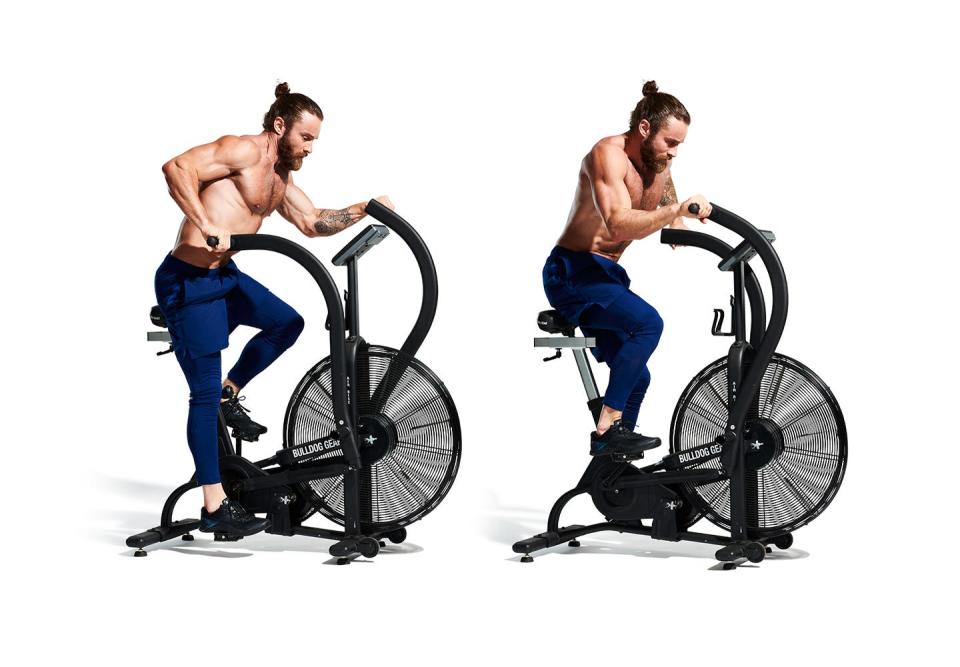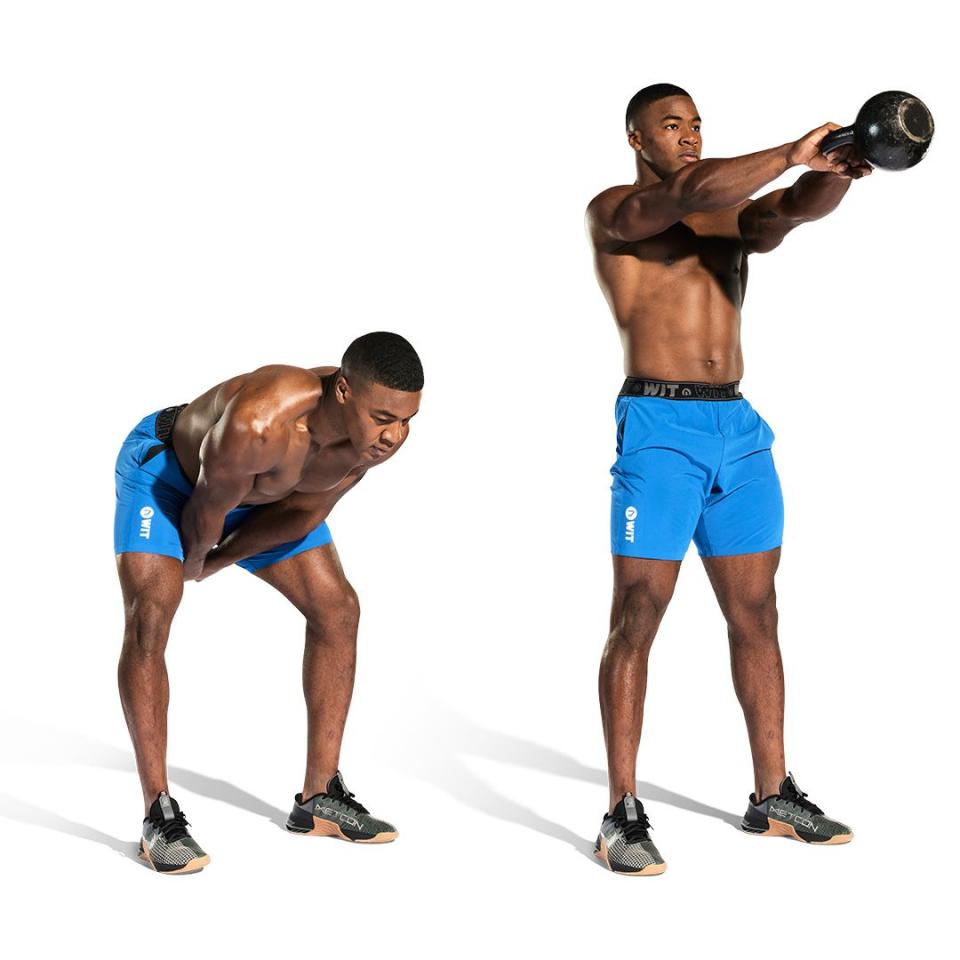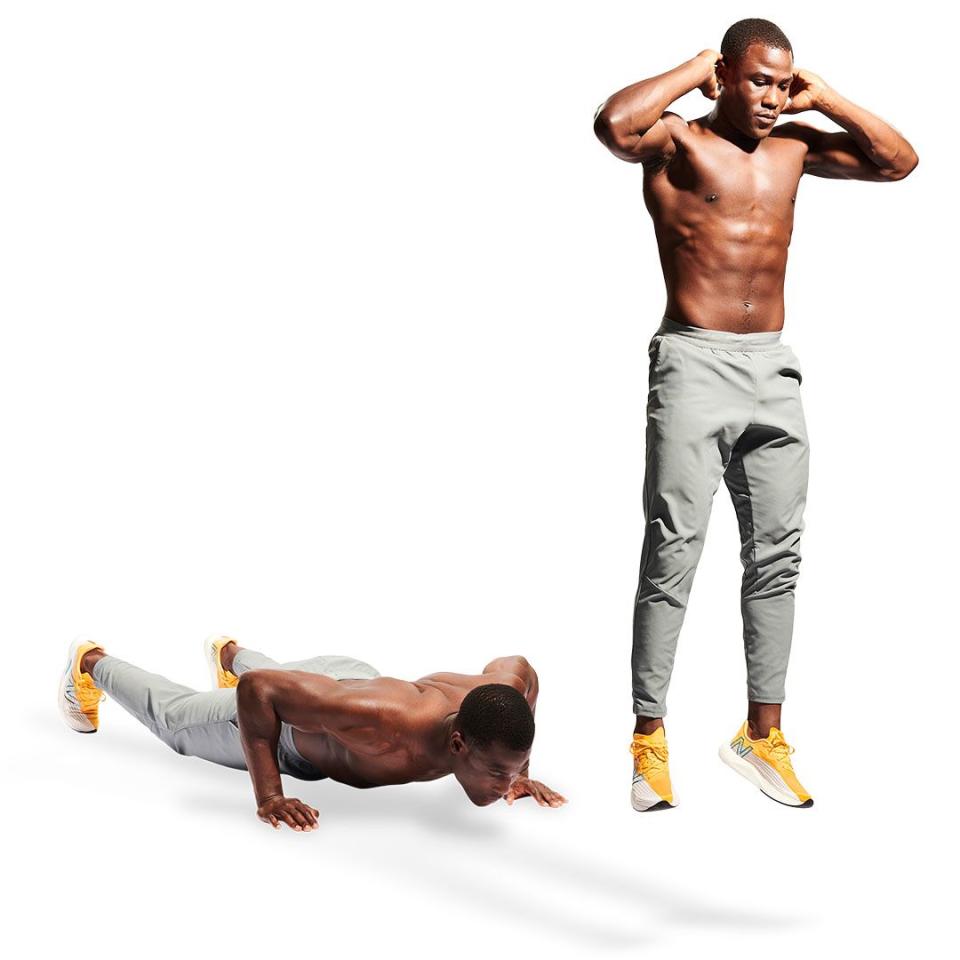3 Workouts To Help You Raise Your Mood, Calm Your Nerves and Find Your Centre
Exercise is good for our mental health. This is not a wishy-washy platitude or optimistic statement aimed at motivating people or helping to shake them out of a rut; it’s a research-based fact backed by a considerably large body of evidence—a body of evidence that continues to grow. A systematic review of over 200 studies, including over 14,000 participants, published in the British Medical Journal concluded that exercise could be more effective than antidepressants for combating mild-to-moderate symptoms of both depression and anxiety. It also asserted that regular exercise is at least comparable to cognitive behavioural therapy. Research also indicated that shorter, more intense bouts of exercise (no matter the type) seem to be more effective than longer-duration efforts.
However, experts are quick (and right) to point out that painting this as contest of 'movement versus medication' or 'exercise versus therapy' is short-sighted, unnecessary, and ultimately could prove dangerous. Movement is a multiplier. In the studies referenced above, exercise combined with other interventions scored higher than any of the interventions alone. So, and it’s important that we start with this, seek out professional help when you need it; listen to the experts, heed their advice, and add exercise on top of professional guidance.
Can Exercise Help Our Mental Health?
But is all exercise created equally when it comes to mental health benefits? Most types of training and movement—including strength training, running, and yoga—when performed at a decent enough intensity, yielded promising results in the studies. But beyond simply hitting the gym and hoping for the best, can we deliberately leverage certain types of exercise, certain protocols, and certain intensities to achieve (or relieve) certain mental affective states, whilst also helping us hit our more tangible, physical fitness goals? I think so. The key, for me, lies in using movement to lean against our current mood; aiming to reverse the inertia of our mood and using the body to help shake the mind and nervous system free of its current groove and into a more neutral, if not improved, state.
Workouts to Bring You up, Settle You down and Help You to Find Your Centre
These three workouts are designed to do just that—taking us up when we’re feeling down; helping us to settle down and find calm when we’re feeling agitated or anxious; or helping us to centre our mind and find concentration and clarity when our focus feels scattered.
Are these guaranteed ‘fixes’? Of course not. But we already know all movement can be beneficial for our mental health, so we have nothing to lose whatsoever by trying to get a little more granular with our exercise prescription.
Workout One
If you're feeling low... sprint and lift:
Check the weather in your mental and physical atmosphere, if you’re feeling slow, fatigued, detached or even numb, try this workout built around heavy weights and sprint efforts designed to up-regulate your nervous system and bring you into a higher state of engagement and arousal.
3 minutes work/ 2 minutes rest x 5 rounds
Go all out to complete as many rounds/reps as possible in each 3 minute window, rest for 2 minutes and repeat for 5 total rounds.
1. Single arm dumbbell clean and push press x 5/5 (each arm)

Hinge at the hips and grab a dumbbell from the the floor between your feet (A). Stand back up explosively, and use the momentum to pull the dumbbell up on to your shoulder (B), dip at the knees and use your legs to help press your dumbbell overhead (C). Reverse the movement to your shoulder, then the ground. Perform 5 reps on one side, then switch and repeat. Avoid excessive rounding of the lower back throughout.
2. Air Bike (or cardio machine of choice) x 10 calorie sprint

Set up on the bike – your back should be straight and the saddle adjusted so you have a slight bend in the knee at the bottom of your cycle, and only the slightest bend in the arm at the end of each stroke (A). Go hard here, open the taps. Every time you get on the bike, treat it as an all out sprint effort.
3. Goblet Squat x 15

Stand tall holding a dumbbell close to your chest in the ‘goblet’ position (A). Sink your hips back and bend your knees, dropping into a deep squat (B), your elbows should be almost between your knees at the bottom. Drive back up explosively, keeping your torso upright and dumbbell steady throughout. Move through these quickly, but safely.
Workout Two
If you need to chill out... practise an aerobic flow:
Feeling on high-alert? On edge and struggling to relax and find calm? The repetitive nature of this ‘aerobic flow’ is designed to help you to tap into the natural rhythm of your body and breath, finding a calm, relaxed, but active flow, lowering the activity in the ‘default mode network’ of your brain, commonly associated with rumination and anxious thoughts.
EMOM (every minute on the minute) x 40 minutes
Alternate movements each minute, rest on the fourth minute, before cycling back to the beginning. Choose distance/ calorie targets/ weights that allow you to work for around 40-50 seconds of each minute, consistently for the full 40 minutes. Try to maintain a strong and steady breathing rhythm throughout, even during the rest minute, only using your nose if possible.
1. Run x 100-200m

Manage your pace relative to your goal distance, but focus on keeping an upright, stable torso (A) landing softly on the middle of your foot (B), keeping your cadence tight and fast, and breath in sync with your steps to conserve energy.
2. Row x 10-15cals (replace for any cardio machine of your choice, or skipping)

Push hard away from the flywheel with your legs (A). Keep your arms straight until your legs are extended, then lean back slightly and pull the handle into your torso to finish each stroke (B). Reverse the movement exactly; arms, hips, knees.
3. Kettlebell swings x 15-20

With a kettlebell between your legs, hinge at your hips, swinging the weight backward, high between your thighs (A). Drive your hips forward to explosively blast it up to eye level (B). Let the momentum return you back into the hinge position and straight into rep two. Keep these explosive, exhaling on the swing, inhaling on the return.
Workout Three
Struggling to focus?... recentre with a burpee breathing ladder
Mind feeling scattered? Struggling to focus and stay on task? This bodyweight only ‘breathing ladder’ can be performed absolutely anywhere and is designed to get you out of your brain and into your body, whilst cultivating concentration and attention. You’ll also be boosting your fitness and building breath control, vital for stamina. A win for body and mind.
1-10-1 Ladder
Begin with one burpee, then stand tall and perform one long, conscious breath— assertively breathing in through your nose, filling your trunk all of the way round, before slowly exhaling through pursed lips. Next perform two burpees, followed by two deep breaths in the same manner. Then three and three, then four and four, so on until you reach ten, then work your way back down the ladder to one. Breathe as necessary on the burpees, but try to keep it rhythmic and keep a count of the breath throughout, this is the focus we want to build to keep our minds on task.
1. Burpee 1-10-1

Drop down, placing both hands on the floor between your feet. Jump your feet back into the top of a press-up and lower your chest to the ground (A). Straighten your arms to press back up and hop your feet back forwards (B). Jump into the air explosively, touching your hands together above your head (C).
2. Diaphragmatic breaths 1-10-1

Stand tall after your final burpee and place your hands on your hips. Draw air in through your nose focusing on slowly and deliberately filling your entire trunk from the bottom up. Gas tank full, pause for a second at the top of the breath before slowly letting the breath back out through pursed lips to control the flow of air. Stay focused on the sensations of the breath, noticing when each breath ends and begins, and the count.
Shift Down Gears
The ‘version of you’ that was necessary to get through the workout isn’t necessarily the one you need for the rest of the day. Use deliberate down-regulation breathing to shift states, kick start the recovery process and leave all the struggle on the gym floor.

Come into a kneeling or seated position, or lie flat with your legs raised on a bench or up a wall. Place your hands on your abdomen.
Slowly but deliberately breathe in through the nose, completely filling your trunk from the bottom up. Once you can’t inhale any further, pause for a second before taking one final sharp inhale through the nose, into the top of your chest.
Let the breath flow back out slowly through pursed lips, until your trunk feels completely deflated. As your heart rate begins to slow and the breath becomes less laboured, focus on extending the exhale.
Repeat this protocol for 20-30 breaths, or for as long as you have.
When is Rest the Best?
Movement can be medicinal, but it doesn’t mean it’s always the answer, especially if your idea of training veers towards the high-intensity, hardcore end of the spectrum. The symptoms below could be signs overtraining, meaning that switching out that interval session for a slow walk in nature, or even a hot bath and an early night, might be a better bet for your mental well being.
Slow recovery and overuse injuries
Unexpected weight gain (or loss)
Irritability and anxiety, especially around training
Persistent illnesses such as cold and flu
Fatigue and lethargy
You Might Also Like


